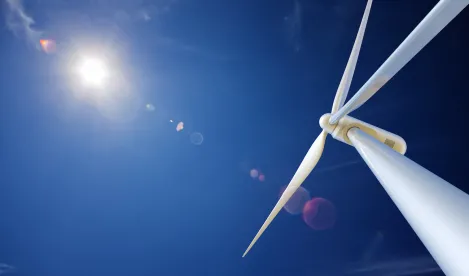Few industries have the growth potential to match that of the offshore wind industry. A March 2020 report by the American Wind Energy Association found that by 2030, the US offshore wind industry is expected to account for:
-
20,000-30,000 megawatts of clean energy capacity;
-
Between $28 billion and $57 billion of investments in the US economy;
-
As many as 83,000 American jobs.
All this from a domestic industry that truly only began in December 2016, when the country’s first offshore wind project, the Block Island Wind Farm off the Rhode Island coast, commenced operations. Subsequent leases off both the Atlantic and Pacific coasts have increased exponentially in value owing to the increased competitive interest in such leases.
Environmental Concerns
While one of the main appeals of offshore wind is its potential to produce vast amounts of clean energy, building and operating offshore wind farms requires extensive planning and effort to complete the environmental review and obtain all local, state and federal approvals necessary to move forward. And the potential for complications is great.
Take the $2.8 billion Vineyard Wind project, for example, which commenced efforts to develop a 166,886-acre wind energy lease area off the coast of Massachusetts in January 2015. Up and until one year ago, Vineyard Wind expected to be operational by 2022 and to be the nation’s biggest offshore wind producer, supplying energy to approximately 400,000 homes. But last August, the US Department of the Interior’s Bureau of Ocean Energy Management (BOEM) delayed issuance of a final Environmental Impact Statement for the project’s Construction and Operating Plan (COP) in order to undertake a broader assessment of all “reasonably foreseeable offshore wind development” in the Atlantic.
BOEM stated that the rapid expansion of offshore wind proposals and change in coastal state wind procurement policies since the commencement of its review of Vineyard Wind’s COP necessitated a broader examination of cumulative impacts from the “reasonably foreseeable” development of offshore wind on the Atlantic outer continental shelf (OCS) over the next 10 years. BOEM’s determination of what is reasonably foreseeable was based on the identification of 17 active wind energy lease areas (16 commercial and 1 research), current state commitments to renewable energy development, available turbine technology, and the size of potential development areas.
While BOEM’s deliberative approach seems at odds with the Trump Administration’s normally aggressive stance on fast-tracking environmental reviews for energy industry projects, the US Interior Secretary David Bernhardt defended the decision to supplement the draft environmental impact statement in Bloomberg News stating that “for offshore wind to thrive on the OCS, the federal government has to dot their I’s and cross their T’s.”
The question developers are now left with is whether BOEM’s expansive approach to the environmental review process associated with Site Assessment Plan (SAP) and COP approvals under the National Environmental Protection Act (NEPA) could spell delays, or at least additional regulatory burdens, for other offshore wind projects in development. And, while the recent revisions to the Council on Environmental Quality (CEQ) NEPA regulations appear to simplify and streamline the process, it is very likely that the amendments will be challenged and the revisions stayed until the matter works its way through the court system.
Regardless of the NEPA amendments, moving forward, developers would be advised to remain vigilant in their market analysis and incorporate the following into their planning process:
-
Tracking and planning for changes in state renewable portfolio standards, new solicitations for off-take arrangements, submission of new COPs and solicitations of interest for new wind energy lease areas that occur after issuance of the final environmental impact statement for Vineyard Wind, which changes each may affect the existing cumulative effects analysis (to the extent this remains relevant) and could otherwise effect localized impacts;
-
Consideration of how aquatic species, ports, and supply chain work will be impacted if multiple projects are under simultaneous development; and
-
Consideration of how wind energy lease areas may interconnect and use offshore grid infrastructure, as well as the impacts on subsea cabling requirements and landing requirements if wind energy lease areas are located in adjacent waters.
Permitting Considerations
Outside of the BOEM process and analysis under NEPA, wind energy is highly regulated—particularly when it is generated offshore. Project permitting can present one of the key development risks, and realistically should be addressed concurrently or tangentially with BOEM’s NEPA review. One of the first and most important steps in developing offshore wind projects is therefore to identify and clarify the process for securing necessary authorizations from all levels of government—local, state and federal.
Major components of the federal environmental review process for offshore wind projects include coordination with the Army Corp of Engineers (USACE) and the US Coast Guard, consultations with the Fish and Wildlife Service (USFWS) and National Marine and Fisheries Service (NMFS) and approvals from the United States Environmental Protection Agency (USEPA). Included within the array federal actions required for authorization to develop and operate an offshore wind project are:
-
Wildlife
-
Endangered Species Act (ESA) –Biological Assessments
-
Migratory Bird Treaty Act (MBTA) - Consultations
-
Marine Mammal Protection Act – Incidental Take Permits
-
Magnuson-Stevens Act – Essential Fish Habitat Consultation
-
-
Private Aids to Navigation - Approval
-
Clean Water Act – Nationwide Permit for the SAP and an individual permit for the COP
-
Federal Aviation Administration (FAA) – No Hazard Determination
-
Clean Air Act – Outer Continental Shelf compliance
-
National Historic Preservation Act – Section 106 Concurrence
Additionally, projects need to be cleared with the Department of Defense though the DOD Siting Clearinghouse.
Separately, each state has its own approach to offshore wind permitting. Some states have taken a more hands-on approach by establishing a siting authority within a state agency. Other states prefer to let city and county officials take primary responsibility via land use and zoning regulations. At a minimum, there will need to be review and sign off by the State Historic Preservation Office, a Section 401 Water Quality Certificate issued, and a Coastal Zone Management Act consistency determination along with other construction permits. Approvals for any other identified impacts to state protected species and fauna may also be required. And last, but certainly not least, there will be local zoning requirements and typically a need to negotiate and enter into at least one (but likely multiple) host community agreement which may impose fees and operating requirements and provide for local input into the permitting and approval process.
The discontinuity between state and federal approvals and lack of coordination at the state and local level with regard to offshore wind permitting have led to project delays and disputes between offshore wind developers and state and local authorities. For example, in 2017, the State of Maryland approved two offshore wind projects off the coast of Ocean City. But local officials want both wind farms located at least 26 nautical miles off the coast to prevent visual impacts from shore. The two developers—US Wind and Deepwater Wind (now Ørsted)—have agreed to place the wind farms between 17 and 21 nautical miles offshore. However, they have not agreed to Ocean City’s request that the turbines be placed beyond the line of sight. As a result of the concerns lodged by Ocean City, state regulatory officials have agreed to reassess both projects, potentially creating serious complications.
In order to minimize disputes and delays, developers should identify all permits, authorizations and agreements required for both the onshore and offshore facilities associated with a project and engage with local community members to identify objections and concerns. Due to the number of permits and opportunities for public involvement in the permitting process, early engagement with community members ideally will minimize 11th hour project adjustments and minimize permit challenges and unexpected environmental mitigation costs.
Building an US Supply Chain
The supply chain for offshore wind runs from environmental and subsea survey work (and vessels), through construction, operation, maintenance and ultimately decommissioning of wind farms. It includes the manufacturing of turbines, blades, nacelles, monopoles, foundations, offshore substations and undersea cable, and the assembly, erection or emplacement of each of them.
Much of the global offshore wind supply chain today was developed in Europe by European and global enterprises. For the US to reap economic benefits consistent with the anticipated $28 billion and $57 billion range of anticipated offshore wind spending in this country, a US based supply chain must be developed and supported.
The US represents a 4,400 terawatt hour per year market for electricity with a large percentage of usage concentrated in coastal states. But the companies that have the capital and technology needed to establish a US offshore wind supply chain must see a sustained pipeline of projects being built in the US each year before they will invest in major US manufacturing, installation and fabrications facilities. For many companies, the tipping point will occur when they see a dependable pipeline of US projects of 1 GW or more per year over multiple years. Otherwise, much of the manufacturing and other economic activity to support the industry will remain off shore. Fortunately, recent permitting decisions and project announcements show that the US is increasingly on the path to supporting prudent supply chain investment.
Many of the functions of the offshore wind supply chain, including construction and maintenance activities, as well as the fabrication and assembly of foundations, turbine blades, monopoles, substations and subsea cable are to a greater or lesser degree maritime-dependent. The availability of US port facilities and wharf and manufacturing spaces reasonably proximate to offshore wind lease areas will drive many locational decisions related to the supply chain. A number of states, including Massachusetts, New Jersey, New York, Maryland and Virginia are actively developing port infrastructure specifically configured to support offshore wind industry and attract the supply chain to their state.
The very sophisticated vessels used to install offshore wind monopoles cost hundreds of millions of dollars. At present, none are US flagged and, under the Jones Act, foreign owned and operated vessels must resort to complicated work-arounds and cannot call on any US ports or transport materials between installation sites. A consortium including the US utility Dominion Energy has announced plans to build the first US flagged construction vessel at a cost of roughly $500 million, but it will take a steady stream of projects to keep such a vessel employed.
In addition, US states are actively ramping up offshore wind workforce readiness programs and focusing a broad array of economic development tools to support offshore wind businesses locating in the US. BOEM calculates that 22 GW of offshore wind projects on the eastern seaboard are foreseeable in the near term. This does not take into account the potential for additional development on the Great Lakes or within the Gulf of Mexico. And, as floating wind technology develops, West Coast markets for offshore wind will also come into play. The opportunities for economic growth and development in the offshore wind supply chain are increasingly bright.
Financing Challenges
Four months ago, financing wasn’t considered a major challenge in offshore wind development. Investors were bullish on the growth potential for the industry, and plenty of serious players were lined up ready to invest in the next wave of US energy production.
Nuno Andrade, Managing Director and Head of Structured Finance for North America at Santander, told audiences at a December 2019 offshore wind energy conference that “We saw a tremendous response from the market. There is pent-up demand especially from European lenders who have been lending to such projects in Europe. The ability to raise debt will not constrain the US offshore wind sector.” At that time, more than 50 investing entities expressed serious interest in financing offshore wind projects, based on the responses to Vineyard Wind.
But the global economy of mid-2020 is completely different from where it was at the end of 2019 due to the COVID-19 pandemic and resulting economic recession. Like virtually every other sector, financial institutions are reeling from COVID-19’s impact and are retrenching for potentially painful third and fourth quarters. Suddenly, the prospect of investing a seemingly high-return, moderate risk offshore wind project is no longer the sure bet it was just a few months ago. But, all bets aren’t off.
The appetite for renewable energy projects in the equity markets, in particular, remains robust. Recently, there has been considerable activity in the tax equity space in connection with renewable energy portfolios. Also, many energy infrastructure equity funds have announced the successful closing of new funds with significant subscribed commitments. Included within such reports is Copenhagen Infrastructure Partners, a major participant in the US offshore wind sector, reaching first close on its fourth vintage fund with commitments in excess of $1.5 billion.
Regulatory delays to the development cycle for US offshore wind projects that are unrelated to the COVID 19 pandemic actually gave the energy finance markets time to adjust to current disruptions. Indications are that lender interest remains strong for projects seeking firm commitments for debt financing. While these projects are new to the US market, offshore wind projects have a long successful record for financing in Europe. Many of the likely providers of debt financing will be lenders that have experience from these earlier financings.





 />i
/>i

